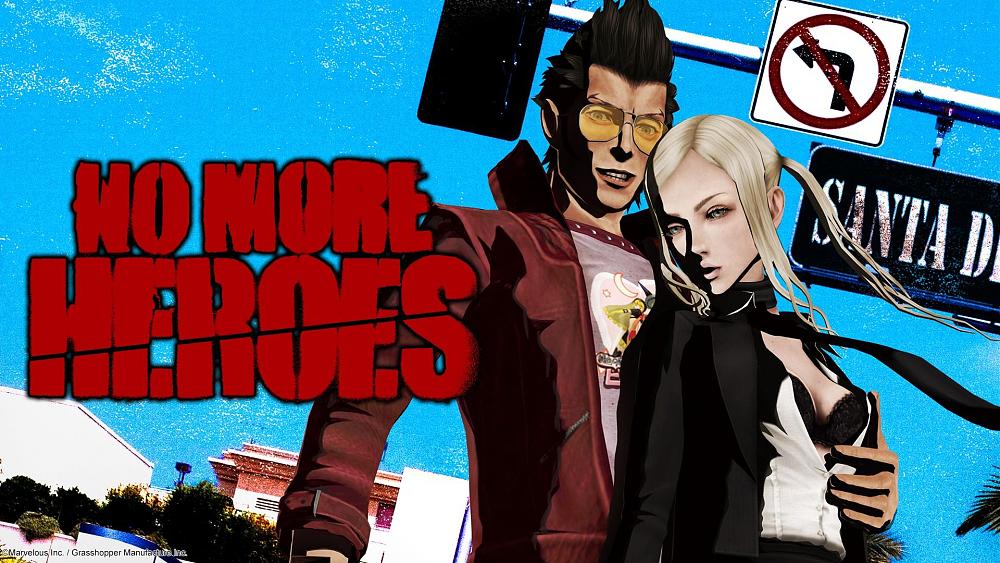
Killer 7 may be the world’s most interesting video game. By the time Suda Goichi developed it with his team at Grasshopper Manufacturer with Shinji Mikami, he was already a rising star in Japan.
His tenure at Human Entertainment gave him a lot of experience with offbeat story driven games. When Grasshopper Manufacturer was established, he proved very capable at managing larger scale projects which eventually culminated with Killer 7; which cemented his career as the “cult hit master”.
How could he top Killer 7? His next game would be one of his most ambitious yet, and would be on the Nintendo Wii at the height of its popularity. No More Heroes became a classic and would get ports on seventh generation HD consoles. Whatever happened to those heroes? They got conversions on the Nintendo Switch, to prepare newcomers for the inevitable No More Heroes 3.
No More Heroes
Developer: Grasshopper Manufacturer / Engine Software
Publisher: Marvelous
Platforms: Nintendo Wii, PlayStation 3, Xbox 360 (Japan only), Nintendo Switch (reviewed)
Release Date: October 28, 2020
Players: 1
Price: $19.99
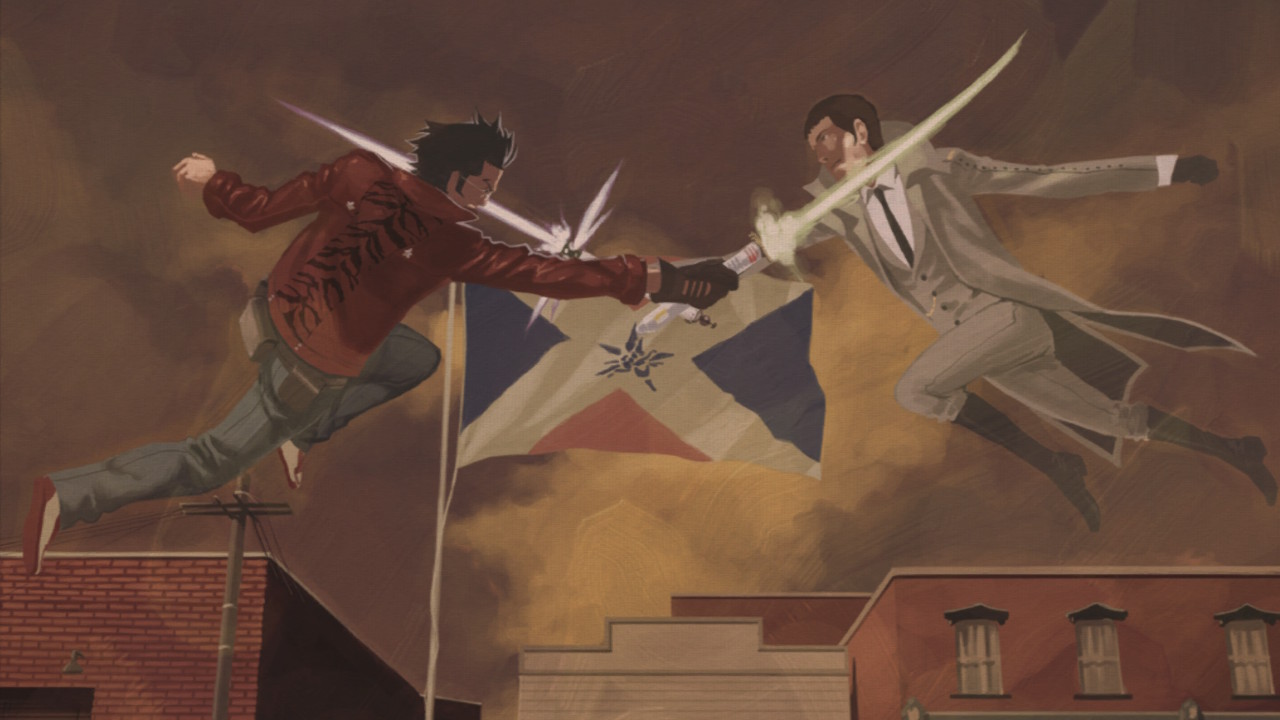
No More Heroes was a very special game on the Wii. It was so unique, the port to PlayStation 3 came at a heavy price. The hub of Santa Destroy was made smaller by way of blocking off bridge access to the industrial district, and the frame rate was worse.
There was a half-hearted attempt to add some of the bosses from the sequel as a bonus to make up for the fact that it was likely never going to leave the Wii. The new graphics were inconsistent, and clashed with the original models. It was not the experience that Suda Goichi intended for his vision.
No More Heroes on the Nintendo Switch is, for all intents and purposes, the definitive way to play it. Improvements to technicalities and a few quality of life adjustments are all this needed to make it better than it was.
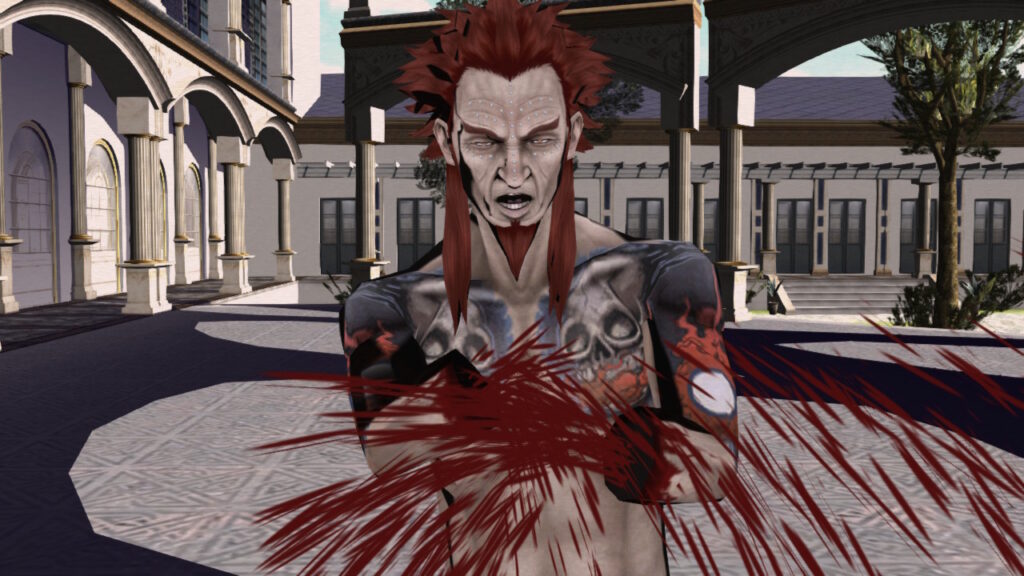
No More Heroes is a violent action game about Travis Touchdown, a regular weeb who discovers his calling in life; to be an assassin. Travis not only seeks fortune and glory, but he also is a tremendous simp for Sylvia Christel, a sexy agent for the United Assassins Association.
This hot Euro thot, who is ready to trot, promises to put out if Travis is able to reach the rank of number one assassin in the association. What transpires is an ominous journey, rich with metaphors and symbolism.
With every ranked battle with an assassin, Travis grows from a bloodthirsty thug with a laser sword, to becoming an honorable hero. He lives by the samurai ethos of bushido, and dedicates his body to hardcore training. Whether it is the unusual regimen from Thunder Ryu or getting assaulted by Randall Lovikov for finding his balls, Travis becomes legitimately skilled.
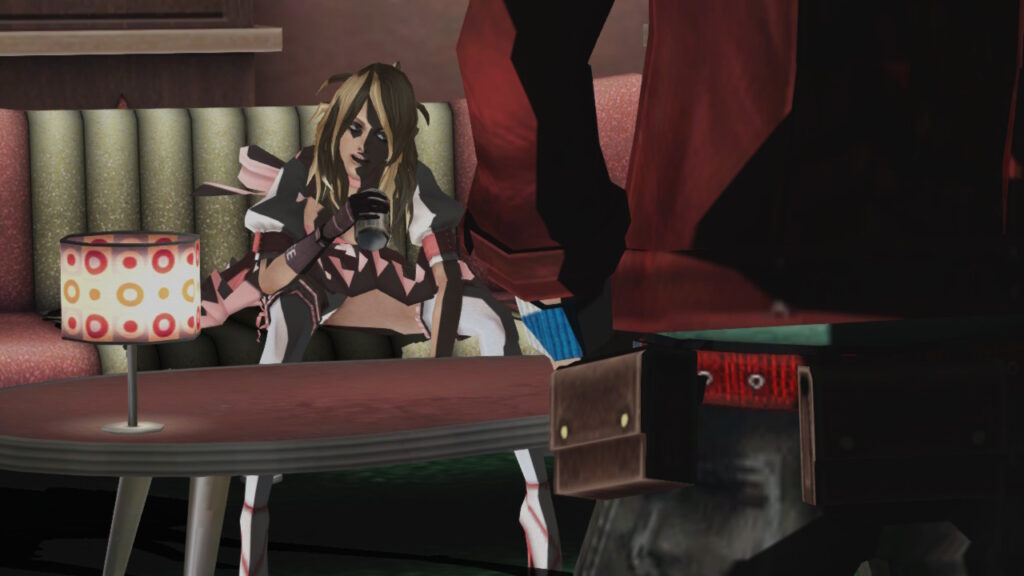
He may be a brash otaku who jerks off too much, but Travis truly is dedicated. No More Heroes fully immerses you into his perspective and way of life. This is made possible due to how the game designed and paced.
Earning cash between ranked missions tasks Travis with taking on odd jobs to unlock assassination missions which is where the real money is. Depositing the fee initiates the next phase of the story and the ranked battle for the top. This is where the story progresses and where a bulk of the gameplay variety lies.
Main story levels will throw all kinds of unusual scenarios at Travis. His beam katana may short out, and he will have to run around like a headless chicken to deactivate a sprinkler system. Another scenario will involve riding his motor bike in a baseball arena, fighting off a huge team of baseball players. There is never a dull moment in No More Heroes.
Everything in No More Heroes has a purpose. The gameplay and its many systems tie perfectly together with the layered narrative, even if it seems like it comes at the expense of the player. Every ranked battle requires an entry fee, and to earn enough money Travis will have to get a job.
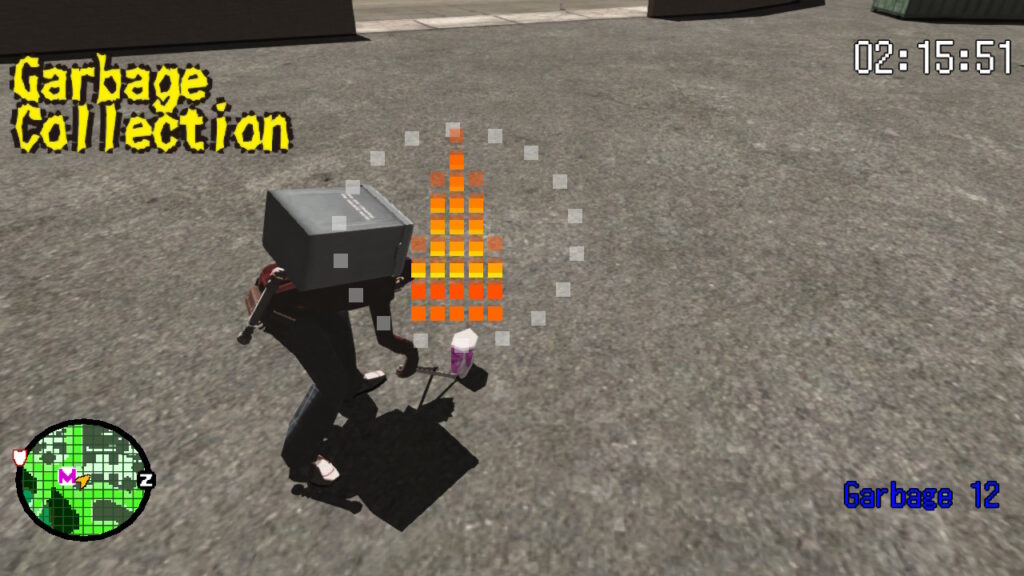
The odd jobs in the podunk Santa Destroy are menial and unglamorous. They don’t pay that much, but that is the point. Travis has to pay his dues and actually work. Much like the barren and boring town he lives in, the odd jobs are a story-telling element. The purpose is to establish a contrast to the ranked battles which are flashy, cool and almost cinematic.
The work takes the form of mini games. Travis may find himself bumbling around in a desert, picking up scorpions with tongs or washing off the graffiti on the sides of buildings. Some tasks are as mundane as mowing the lawn or picking up trash.
Actions during these brief side-jobs are simple, often requiring a basic swipe gesture with the joy-con or flick of an analogue stick. Travis’ animations are amusing and comical as he does his duty with gusto and pride.
Mercifully, No More Heroes only expects players to do each of these jobs at least once. Upon completion, more assassin missions are unlocked. These will pit Travis against several generic enemies, but with a challenging requisite such as “wrestling moves only,” or every enemy will have guns. Other times, missions will demand one target be killed among many strong enemies.
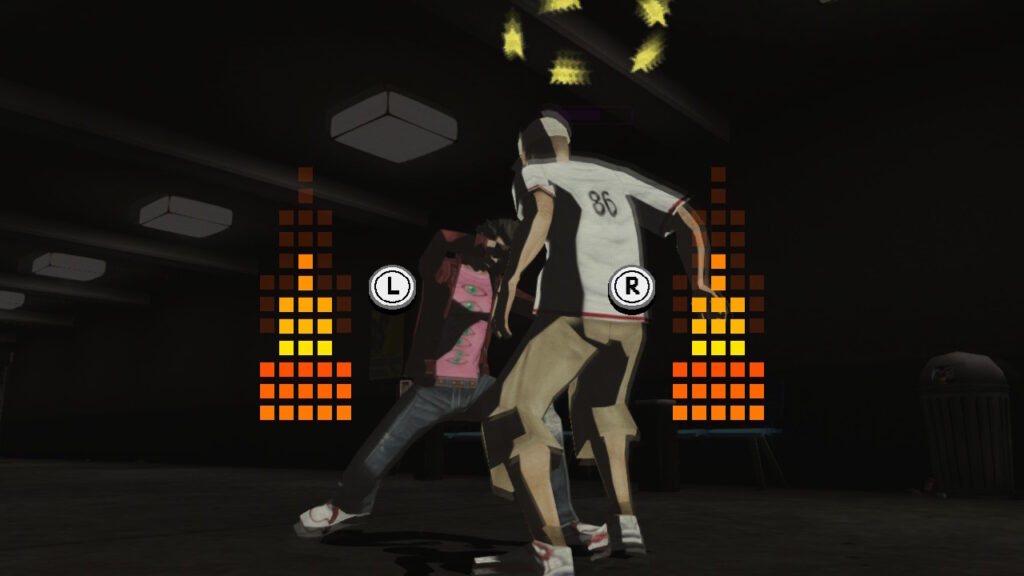
The town of Santa Destroy isn’t without its charm. It may be boring and it is a bit of a pain to get around it, but this is what it is like to be Travis. Early on he is motivated by materialism, and the gameplay even supports this by allowing players to spend the money they earn on ridiculous t-shirts and wrestling videos.
Santa Destroy becomes like a ugly blanket that keeps you warm with its embrace. It may not look like much, but it is hard to not become attached to it. It has a memorable layout with lots of interesting signs with cool graphic design, and it is exciting to find shirts in dumpster bins. Santa Destroy has a laid back atmosphere, and losing it in the sequel is sorely felt.
The reoccurring Moai heads scattered all over the town suggest that they might have had a purpose at one point. A lot of the unique and unused landmarks in the hub give the impression that Suda Goichi might have a much bigger vision for No More Heroes.
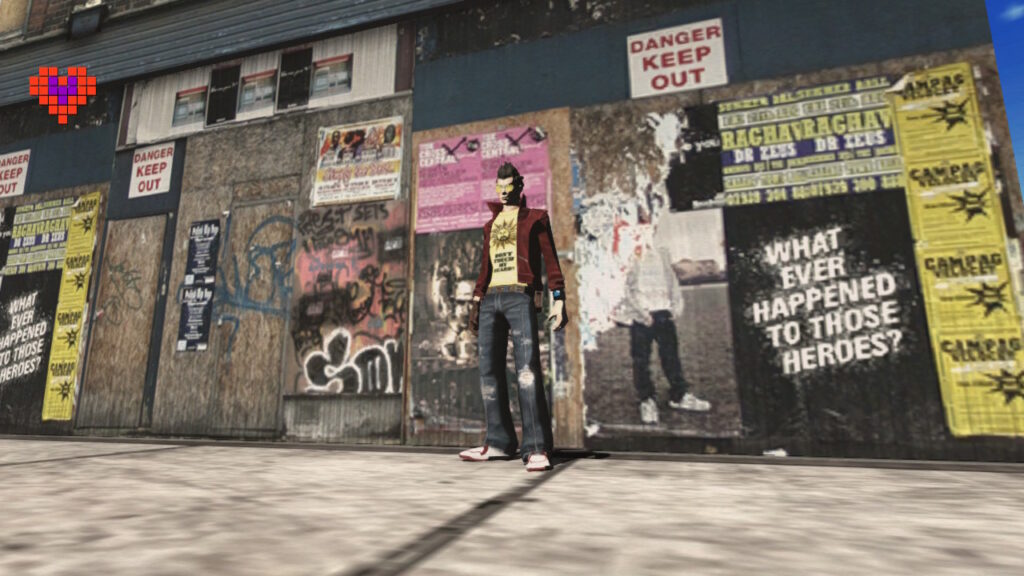
It is possible that No More Heroes was compromised in its development. The fridge in Travis’ motel room restores his HP, even though it is impossible to lose any in Santa Destroy. Playing with Jeane the cat does nothing at all, and the Schpeltiger bike is rarely used outside of a couple of instances or to get around faster.
Schpeltiger is such a minor aspect to No More Heroes, Engine Software did not bother to address its flaws. The spotty hit-detection, the sluggish jumping and unresponsiveness when changing gears is all still present from the Wii version. Most people will forget that the Schpeltiger is in the game, but it is too bad it was never improved.
The most disappointing activity is the free missions. These are incredibly difficult, and are not worth the reward earned to complete them. Every single one of these requires to fight many thugs while not getting hit once. God help the poor forsaken soul who dares to beat the no-hit challenge full of gunmen. The combat system in No More Heroes is excellent, but it is not meant for situations like this.
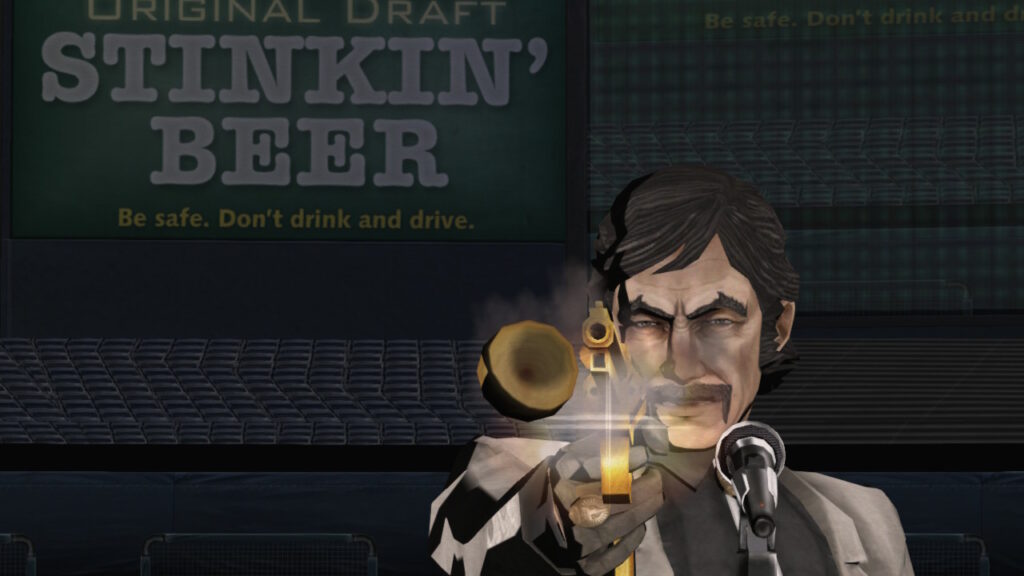
The fighting in No More Heroes takes some influences from the z-targeting and circling from The Legend of Zelda: Ocarina of Time. Travis can lock-on to targets and while focused, he will auto block most attacks. Sometimes enemies will have a slow winding unblockable strike, and this is where dodge rolling comes into play.
Dodging in No More Heroes comes with a risk. Travis gets very generous invincibility frames and is able to roll to the sides or backwards. The drawback is that this also disengages the lock-on and frequently will lead to some disorientation. It leads to unfair sucker-punches and there are no moments where you won’t want to be locked-on.
Outside of this tolerable annoyance, No More Heroes‘ swordplay is very satisfying. Travis is able to fight in two stances; high and low. The stances fluidly alternate with a simple tilt of a joy-con, or players are free to use the X and Y face buttons.
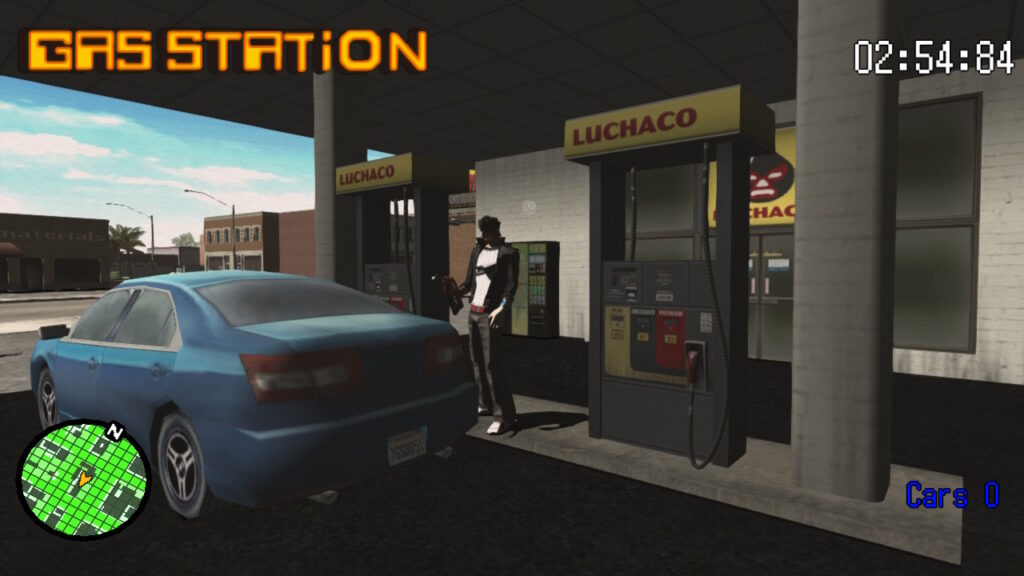
After chopping up a threat’s life-bar, comes the finisher. Whether it is performed with a simple swipe gesture or a flick of the right analogue stick, Travis will split boys like a Mortal Kombat fatality. A clever player can even position themselves and bait thugs into position where its possible to chain multiple decapitations in a single finisher.
Basic mooks erupt into Las Vegas-style fountains of red juice that’s accompanied by a sumptuous crunchy sound effect, as cash flies on screen. Sometimes when half a dozen grunts get finished in one blow, the effect is so much it tanks the frame rate. It becomes satisfying to see the game buckle under the stress of the powerful attacks Travis can do.
On top of Travis’ very samurai-like handling of a laser sword, he is able to make elaborate combos by mixing in jabs and kicks which can stun enemies. These are useful for performing devastating wrestling moves, which also are initiated with the same gestures and prompts as finishers. They are high spectacle, and do the most damage against bosses.
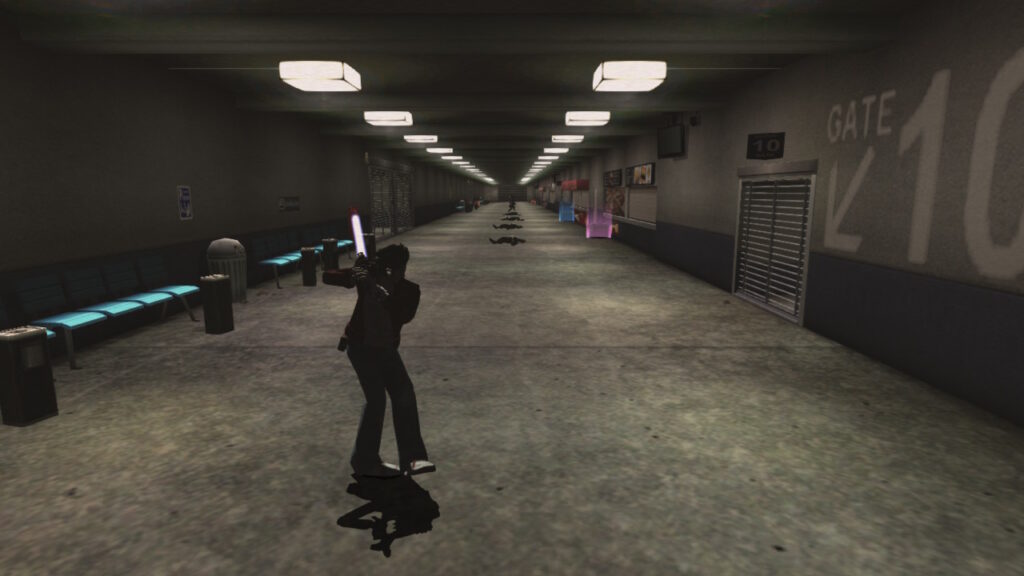
Other useful abilities that Travis can do is his dark-step; which is activated by tilting the left stick left or right, just before an enemy’s attack connect. It functions as a slow-mo trigger, and breaks through guarding. The slow-mo also can be used as an opportunity for Travis to jerk his beam katana to charge its battery.
The depth of No More Heroes‘ systems are not in its mechanics. The substance lies in its limitations and how they are used against the amazing boss line-up. These battles become intense showdowns where the pounding music further heightens the stakes. It’s crucial to be vigilant on the tells of each opponent, since the fights can be long and they sometimes have an instant kill move.
Every ranked assassin has their own style and gimmick. Fighting Shinobu demands Travis to take it slow and to not rush her, since she is more agile than he is. Holly Summers uses the battlefield and can trap Travis in holes, which can also be used as fox holes against her explosives.
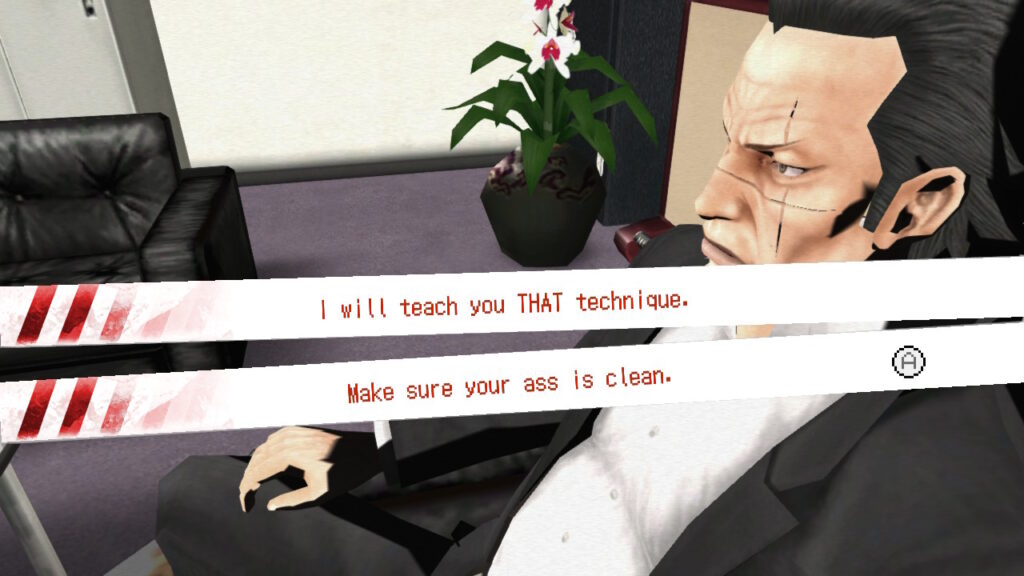
One minor annoyance that is in all the ranked battles is the over reliance of invincibility frames. It is not that they are just overused, the game is inconsistent at communicating when a boss can and can’t be hit. This is why paying close attention to the tells and motions of each boss is a major aspect of the combat.
It isn’t until the endgame where Travis can obtain the best weapon and completely circumvent the egregious i-frames. A fully charged low-stance attack completely ignores defenses, truly proving this ultimate sword a weapon of champions.
Performing finishers on opponents triggers a slot-machine, which mixes up the variety while fighting. Travis may gain temporary hyper-speed movement, a lethal long ranged fire ball or will go darkside mode where he instantly kills upon a QTE.
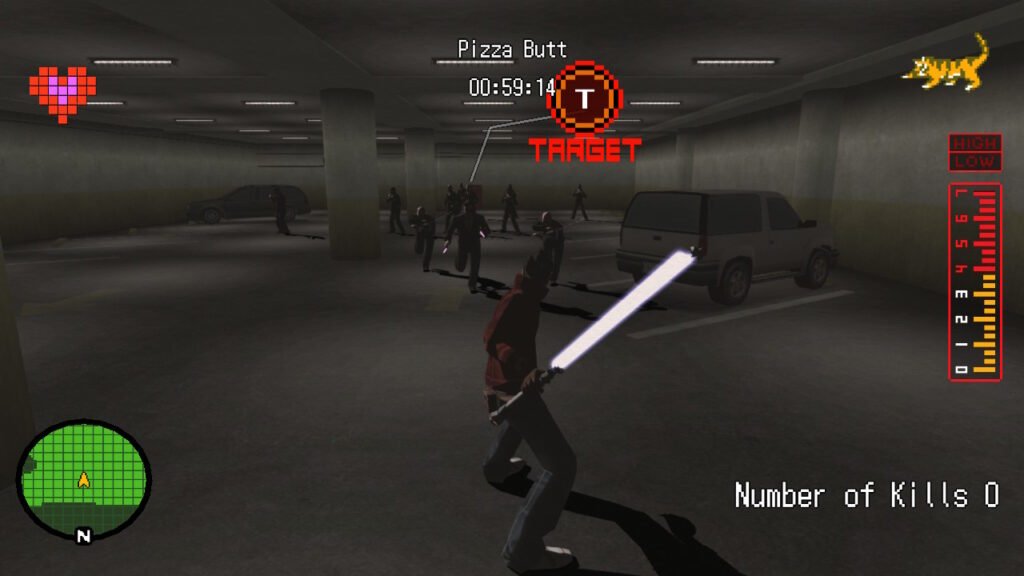
These power-ups are totally random, and it is possible to gain one of these right after murdering the last hombre in the room, rendering it wasted. The only jackpot Travis can save is the lucky 7 which is worth a lot of money post mission, but can be activated whenever and basically kills all thugs in a room.
The Switch port of No More Heroes boosts the resolution to a crisp 1080p. Many of the textures have been improved, making many details in the world more noticeable than ever. The signage that is peppered through out Santa Destroy is readable, and even Travis’ shirts are more clear than ever.
No More Heroes was a very stylish Wii game. The art direction emphasized on striking, deep black shadows that contrasted beautifully. Characters would have very defined and graphic silhouettes that further emphasized their incredible designs. Female characters especially got extra care, and are supple and round in all the right places.
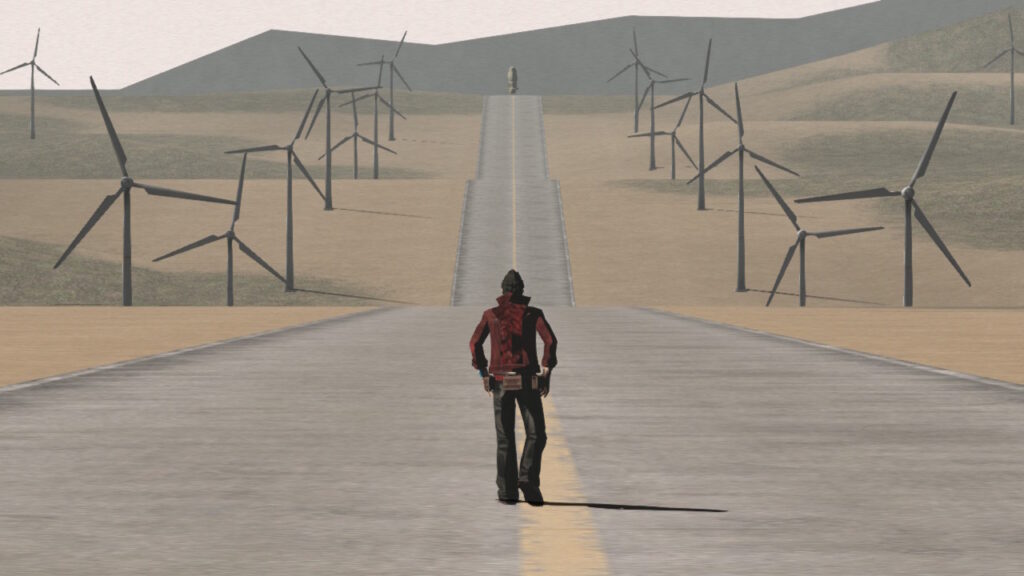
The stylish, anime-esque art direction has a punk flourish that adds a bit of fresh edginess to the setting. The garage band style graphic design and pop aesthetics is a Suda Goichi staple and its ever present in No More Heroes. It is a flavor that can only be found in games from Grasshopper Manufacturer.
On the Wii, No More Heroes had frequent and sometimes long load times. This version on Switch makes the load times so fast that the bouncing star minigame can’t be played anymore. It makes up for the loss of the music track Heavenly Star that would play in Dr. Naomi’s garage and Beef Head Video Rental.
The absence of the pop-song will disappoint some, but the improvements to the many technical aspects of No More Heroes still make it the best way to play it. Retrying missions no longer takes forever, and the marker to restart them is available immediately upon failure. This drastically expedites the experience and cuts out filler.
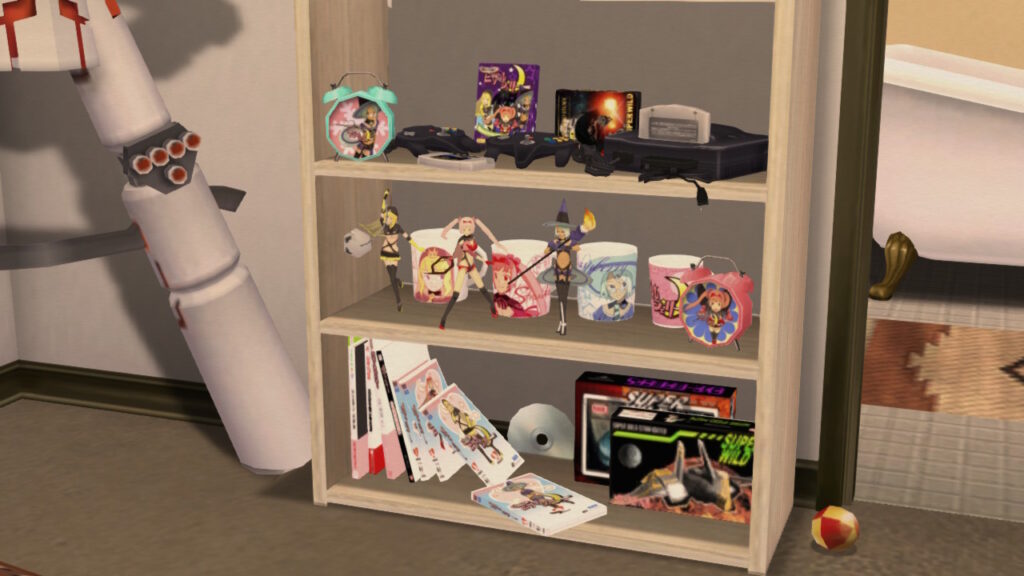
The only technical hiccups that are exclusive to the Switch version is a few instances of low level detail culling that do not load properly in the Santa Destroy hub. A few minor graphical bugs with NPC vehicles pop up once in a while, but are never game breaking and do not happen enough to distract too badly.
No More Heroes ranks high as one of the best soundtracks in a game from its era. Its only competition is its sequel, and maybe other games from Grasshopper Manufacturer. Every single boss track is flawlessly accompanied by the battle its intended for. Each composition matches the pacing of each skirmish, synchronizing with the actions of Travis and his opponent.
From the sexy and sultry yet angry Pleather for Breakfast, to the main theme song that has many versions to fit each moment, the music in No More Heroes elevates every scenario. Even the chill rockabilly music that plays when riding around town makes you feel the scorched wind wiping across your brow.
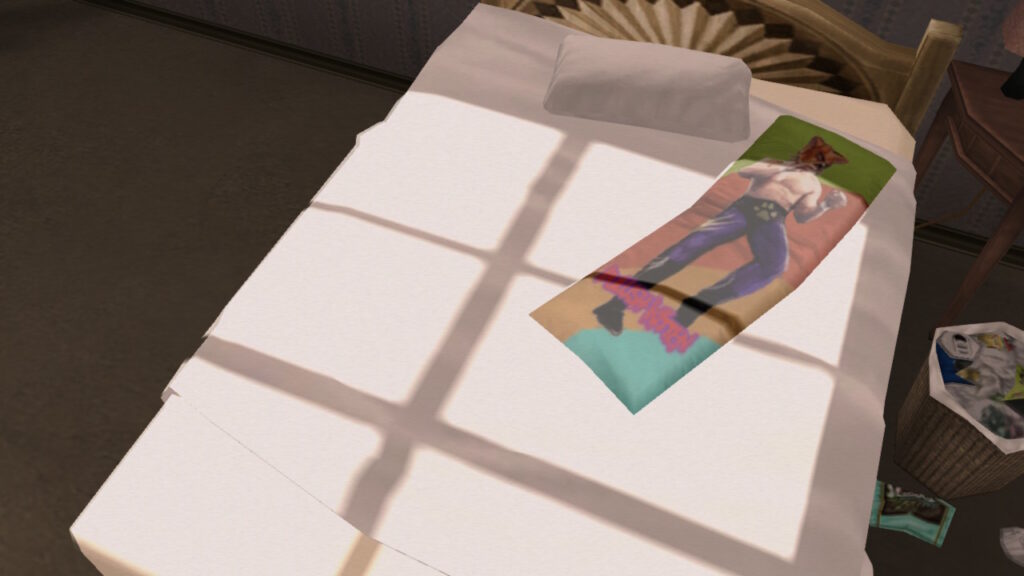
At the start of the game, the main theme has a casual and chipper vibe to it. As the story progresses, it grows more foreboding, as if it is a reflection of Travis’ state of mind. It is a techno fury that is full of catchy tracks that you might want to workout to.
On top of the incredible music, No More Heroes also has excellent voice acting with some of the best casting ever in a video game. This is a Kris Zimmerman joint, and she brings with her a lot of the Metal Gear Solid regulars. The tone in a story like this is very delicate and can be easily fumbled, but the cast utterly nails the sincerity and humor where it’s appropriate.
Robin Atkin Downes is flawless as Travis Touchdown, bringing a lot of humanity to a very difficult character to like. In lesser hands, Travis would have ended up like Dante in DmC: Devil May Cry the reboot. Robin manages to fully embody Travis, even making his absurd attack call-outs sound convincing and genuine.
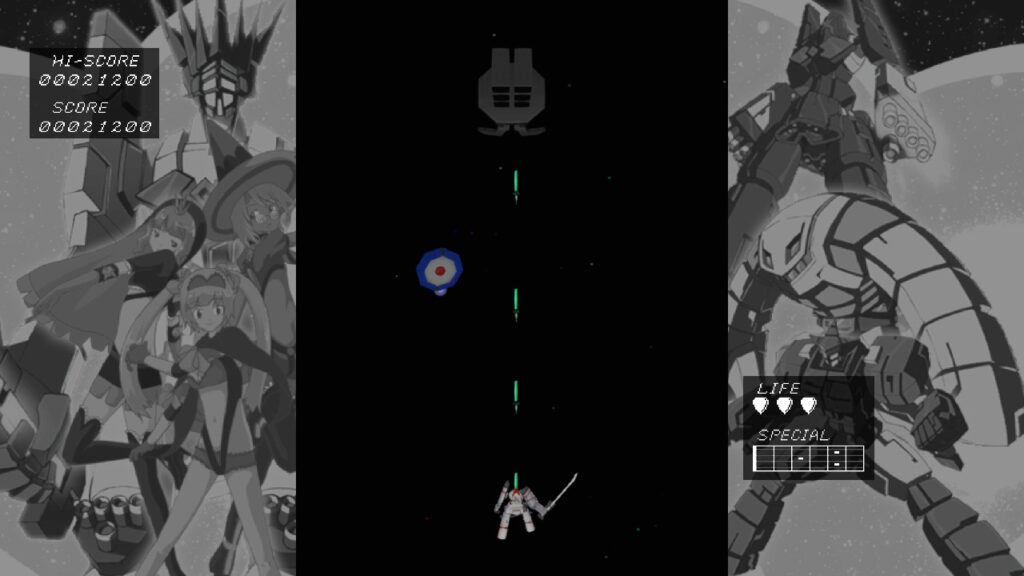
No More Heroes still stands tall as one of the great cult games of its day. It has aged very well in an era where experimental indie games are more common, and players are more open to unconventional design. It never has a dull moment, and has so much variety packed into a game that has such simple combat.
The Nintendo Switch port of the game makes more improvements than mistakes. The extra fluid frame rate, fast load times, and being able to redo missions faster makes up for the minor short comings. Many fans will lament the loss of Heavenly Star, but it is hard to be too disappointed when mostly everything else is improved.
The new game plus mode adds plenty of concept art to dig up, and Travis is able to further upgrade his ultimate weapon. Replay value is high, and the overall package is affordable at a mere $19.99 USD. If you are a fan of Suda Goichi, thoughtful violence, random shoot ’em up sequencesm and symbolism; you’ll love No More Heroes. If you aren’t, you should still give it a look.
No More Heroes was reviewed on Nintendo Switch using a code purchased by Niche Gamer. You can find additional information about Niche Gamer’s review/ethics policy here.